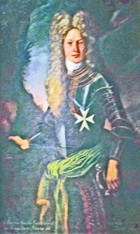

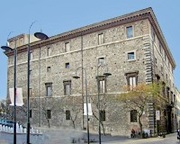
Michelangelo Spada commissioned this palace. He enjoyed the patronage of Pope Julius III, who invested him as Count of Collescipoli in 1551, in return for a financial consideration. When Julius III died in 1555, the people of Collescipoli rebelled, and Pope Paul IV ruled that the grant had been illegal. Despite a long process of litigation, Michelangelo never succeeded in over-turning this decision. He seems then to have retired from public life, although he retained a great deal of influence in papal circles:
-
✴in 1567, he prevailed upon Pope Pius V to allow the return of goods confiscated from the Commune after the Banderari revolt three years earlier; and
-
✴in 1572, he was one of the ambassadors sent by Terni to Pope Gregory XIII to negotiate absolution from the interdict that the city had incurred following an attack on Papigno, a village owned by Narni.
He died in 1583, and was buried in San Pietro.
The design of the palace is traditionally attributed to Antonio da Sangallo il Giovane. However, Sangallo died in Terni in 1546, while working on the Cascata della Marmore: the palace is more likely to be the work of his associate Silvestro Sallustio Peruzzi, the son of the more famous Baldassarre Peruzzi.
The palace remained in the Spada family until 1798. The terms of the will of Michelangelo Spada made it difficult for his descendants to sell the property, but they contrived a tortuous series of transactions by which ownership passed to Alceo Pecoli Massarucci.
The Suore del Bambino Gesù acquired the palace in the late 19th century. It passed to the Commune in 1957, but the sisters remained in residence until 1972, when the city government moved its headquarters here from Palazzo Comunale.
Architecture and Decoration
The palace originally comprised two wings with a garden between them. Its facade was in Via Roma, to the right in the photograph above:
-
✴the garden was paved in the 18th century to form an inner courtyard; and
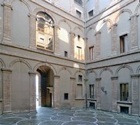
-
✴the present façade, with its three arches (illustrated above), was built across what was then the back of the building. The Suore del Bambino Gesù commissioned the third floor of this part of the palace in the late 19th century.
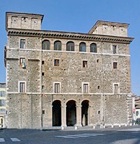
Steps in the courtyard (on the right if you enter from the main facade) lead to the Sala di Fetonte on the first floor, which is named for its frescoes (see below); the main meetings of the Commune take place here.
Frescoes in the Sala di Fetonte (1575-6)
According to the biographer of the Flemish artist, Karel van Mander, he “made several large pieces for a count in Terni, a small town in Italy, illustrating the history of the Paris massacre, with the admiral being cast from the window”. These must have been the frescoes that Count Michelangelo Spada commissioned for his new palace.
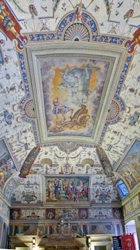

-
✴King Charles IX sanctioning the assassination of the Huguenot leader, Admiral Gaspard de Coligny;
-
✴the wounded admiral being carried home following an unsuccessful attempt on his life; and
-
✴the massacre that followed it (illustrated here), with the wounded admiral being thrown from a window in the background.
These scenes were adapted on a smaller scale from the frescoes (1573) by Giorgio Vasari in the Sala Regia of the Vatican, which were completed very soon after the events depicted in order to celebrate what was seen as a glorious victory for the papacy.

The choice of these scenes, which Vasari had designed for an important public space in the Vatican palace, in order to decorate a residential environment, undoubtedly reflected the anti-Protestant fervour of Michelangelo Spada.
Art from the Palace
